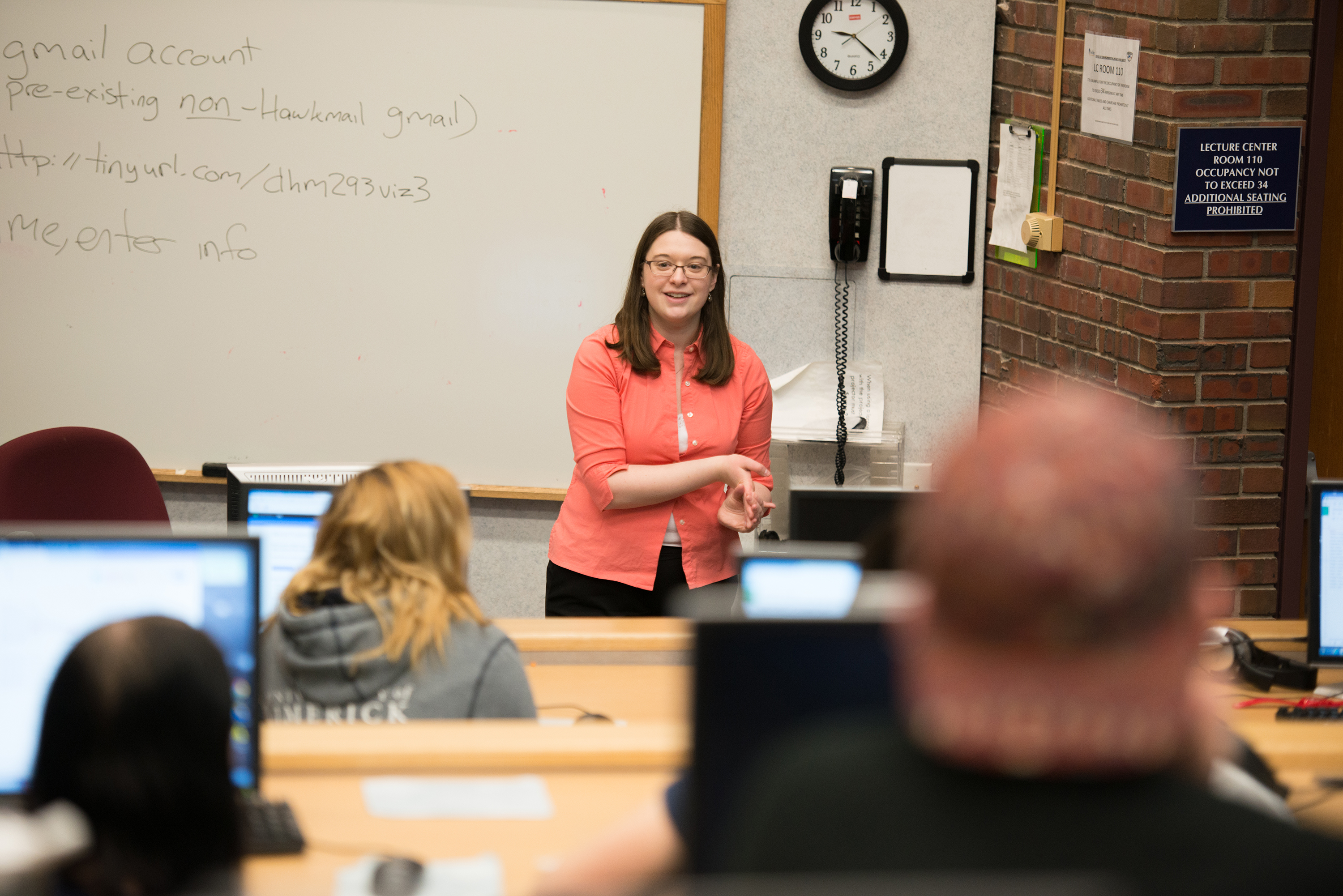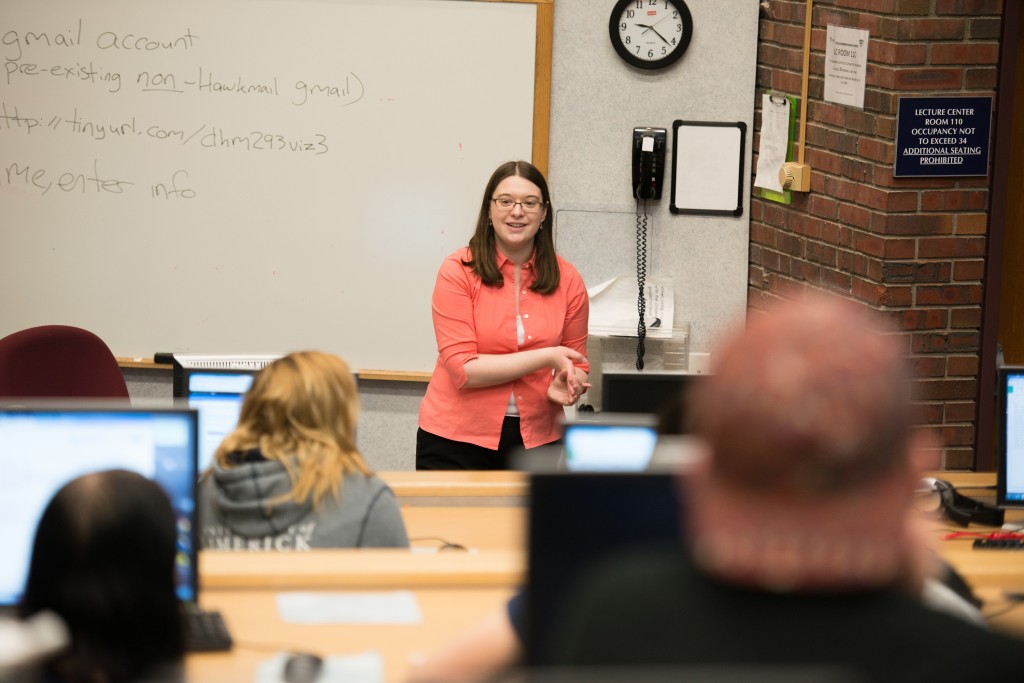
Annie Swafford
Position: Assistant Professor, English Department
Education: Ph.D. (2014), M.A. (2011), English, University of Virginia;
B.A. (2006), Music/English, Wellesley College
Faculty member since: August 2014
What do you like about teaching at New Paltz?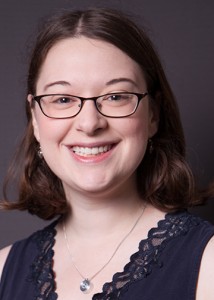
New Paltz really values interdisciplinary work. So much of my work is interdisciplinary, looking at the connections between Victorian poetry and music, and the use of digital technologies to facilitate that work. This is a good place for that sort of approach. With the disaster studies program and all sorts of majors, this is really a place that can be my interdisciplinary home.
Tell me about the digital humanities course you created.
It’s called “Digital Tools for the 21st Century: Sherlock Holmes’ London.” It’s an interdisciplinary 19th century studies class that teaches people about digital humanities, or using computers for research and pedagogical purposes in the humanities. It’s such a broad definition because it encompasses so many different methodologies and tools. One is mapping, or GIS (geographic information systems). For literature, if you have a text that revolves around London, you could use digital mapping software to plot where different characters go, trace their roots, and figure out how space and cities operate in texts. If you study military history, you can digitally map out a battle so it’s easier to follow. You also have data visualization, which includes things like network visualizations of relations between people or ideas, and also things like distant reading or topic modeling – taking thousands of texts, running them through a computer, and looking for patterns or similarities. We do all these things in my class, and we use the Sherlock Holmes stories as a starting point. For their final projects, students have done topic modeling of George Bush speeches during his presidency, a mapping project of Huguenot Street, a mapping project of New Paltz, and many others.
I haven’t done a lot of work with mapping in my own research, but I think it’s an incredibly useful tool and I’m excited to teach it to both students and faculty. Geography Professor Melissa Rock and I were able to secure funding from the Provost’s Office to open the DASH (Digital Arts, Sciences, and Humanities) Lab, a space for learning digital scholarship located in the library. We already have a list of about 20 faculty members who want to come and learn how to make digital maps and have their students make them, too.
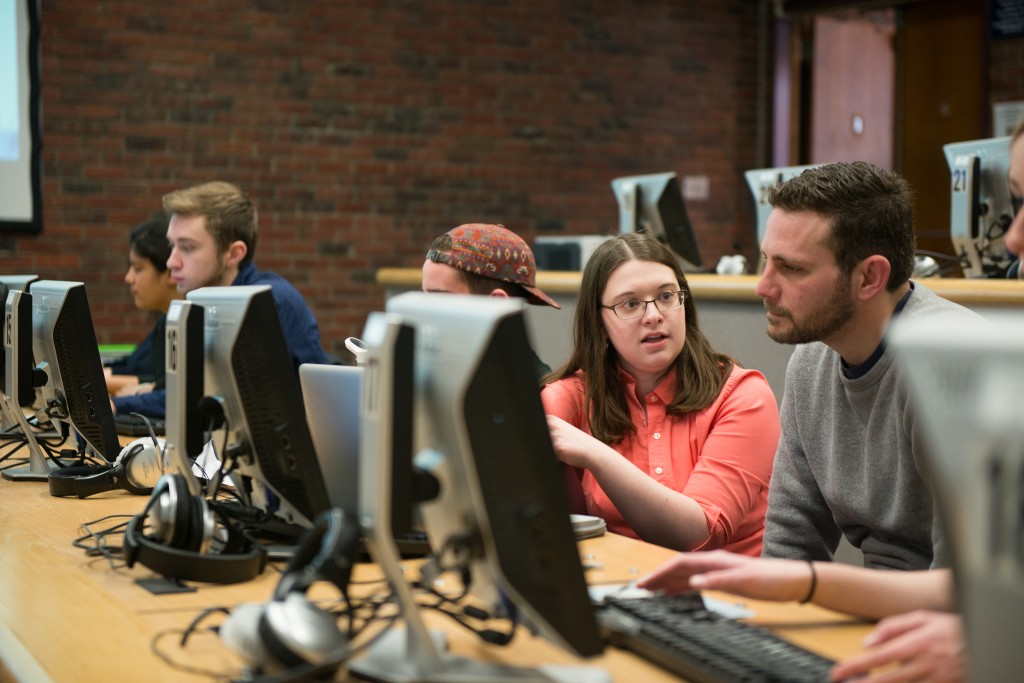
How did digital humanities work its way into your studies?
I started doing digital humanities because I wanted to look at the intersections of music and Victorian poetry – specifically, songs that used famous Victorian poems as their lyrics. I realized digital humanities could help me invent a publishing framework to facilitate this interdisciplinary work, so I invented Songs of the Victorians. One section is basically an archive where the original first edition printing of a score is synced up with an audio file, so people who can’t read music can still follow along. Then there’s a full article-length analysis of the song, with little speaker icons users can click to see the relevant excerpt and time it with the music. I learned how to program, and that was sort of my intro to digital humanities, and realizing how it can help us do research and make arguments we could not do otherwise.
New Paltz really values interdisciplinary work. …
This is a good place for that sort of approach.
Why are you so interested in the Victorian Era?
My parents are English professors, and my dad teaches Victorian literature, so I grew up reading lots of it. The Victorian period is fascinating – it faced so many of the issues we currently face. The Industrial Revolution made it really easy to make more printed materials. Paper became less expensive, and literacy dramatically increased. Of course, people started panicking that the quality was going down since so many people could now read or publish. That’s exactly the kind of rhetoric you see today with blogs and Twitter and comments on New York Times articles. It’s fun to historicize our own moment by looking back at the Victorian period. Issues we think are modern and unique actually aren’t that new.
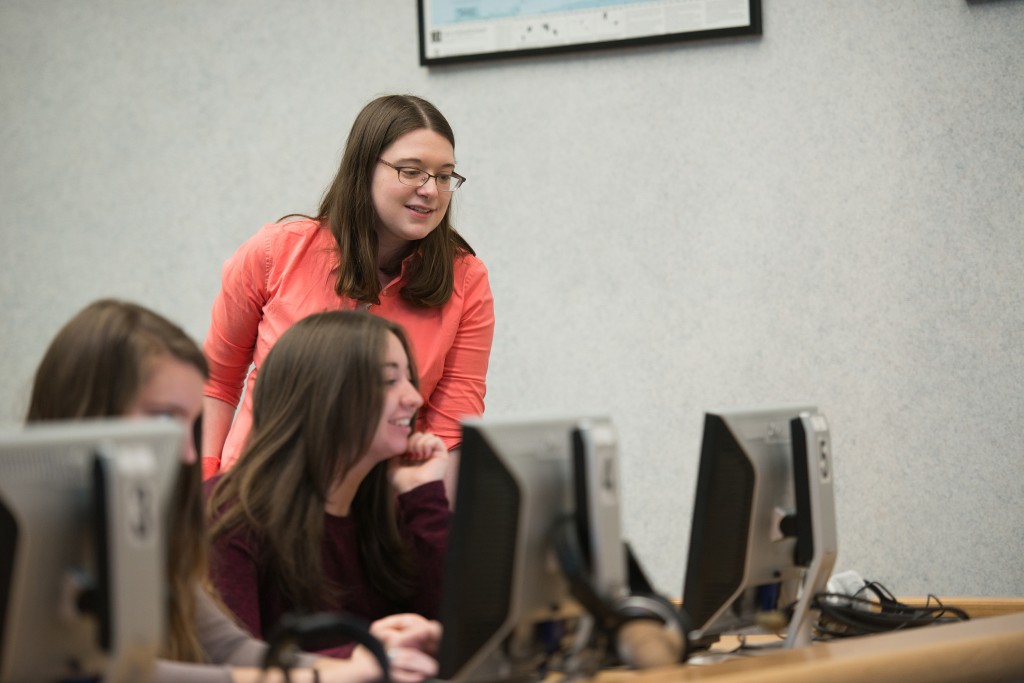
Why do you love teaching?
I love having students be able to figure out how to analyze literature themselves, especially when it might seem difficult, intimidating, or alienating. Giving them the tools and knowledge of the questions they need to ask to come to their own answers is fantastic. With digital humanities, it’s fun to introduce them to a new field they’ve never heard about. It helps them not just with research; knowing how to visually display information is important for any career.
Are you enjoying your new home in the Hudson Valley?
I’m originally from Ithaca, so it’s nice to be back in New York State. My husband and I are in Gardiner, not too far from New Paltz. It’s stunningly beautiful in the fall. The apple picking is lovely, as well as the hiking. I love the food scene – there are so many amazing restaurants here. And I grew up with folk music, so I’m excited about the music scene.

